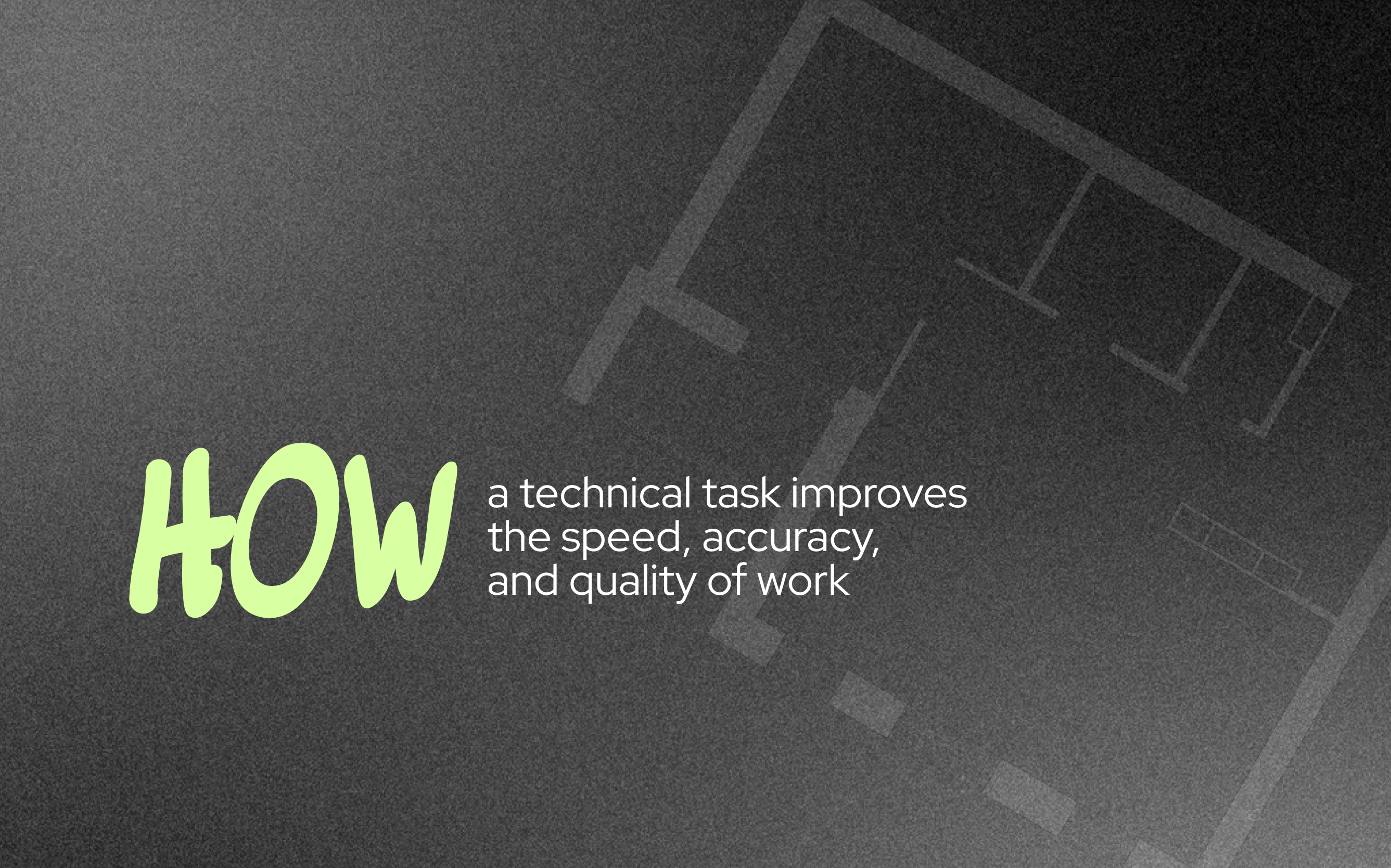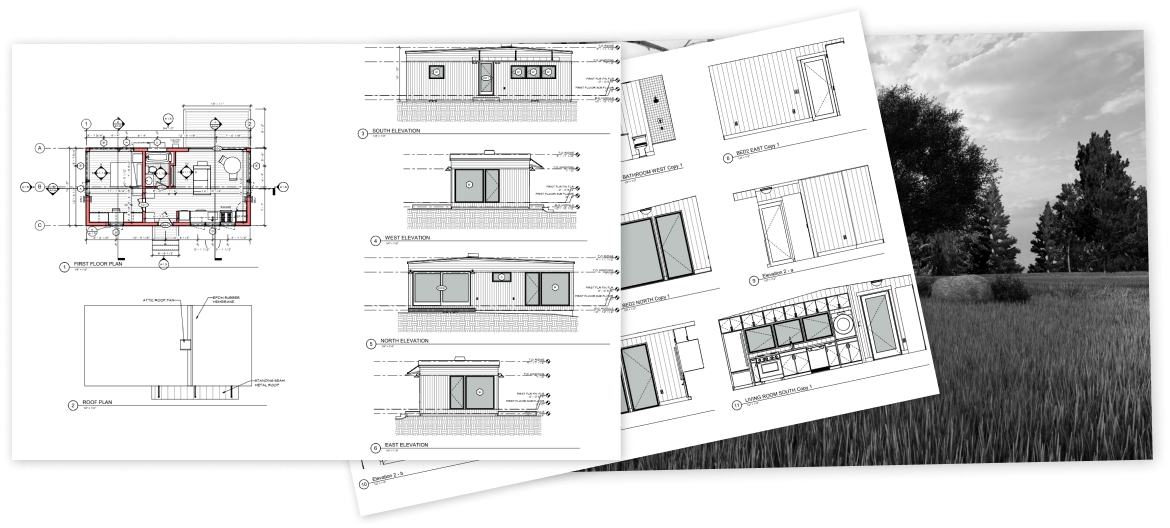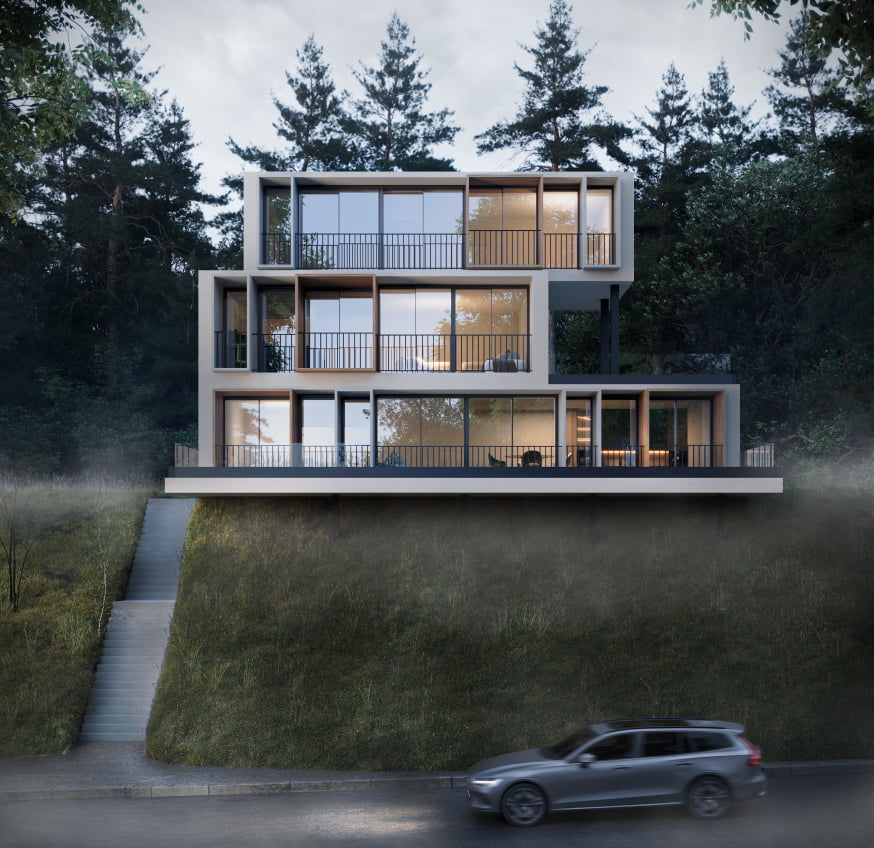How a Technical Task Improves the Speed, Accuracy, and Quality of Work


Interested in 3D visualizations for your project?
The client can confidently earn a +1 in karma when they come with a detailed mood board. Meticulous descriptions, whether it’s the dimensions, colors, and materials of interior items or a bonus lighting scenario for the hallway, command respect. A serious approach to the task involuntarily gains trust and hints at further cooperation, and a repeat visit to the company for “turnkey” services is perceived by the team as a blessing.
There are also less positive situations, for example, when the rendering of a completed 3D scene needs to be forcibly stopped because an “earthquake” of interests occurs between the client and the performer. “Mountains” of misunderstanding arise in their interaction. Some erupt like a volcano after reaching a conditional mark of 10 on the scale of comprehensive revisions. Naturally, their percentage can be reduced to a minimum. The recipe is simple: first, add a “pinch” of a well-composed technical task, and then mix it with continuous communication with the performer. Done.
What is a technical specification?What is a technical specification?
It is the main requirements for the product. It is a kind of “communication” bridge that connects the performer and the customer on different shores.
The technical specification can also be compared to the T9 system on mobile phones.
How to display the word “success” on the screen using the keyboard layout, which will later describe the result of your work? It is logical that to do this, you need to hit the right keys on the smartphone. If one symbol is missing, the predictive text system will anticipate the train of thought and suggest the correct noun. Otherwise, T9 can inadvertently “substitute” and provide an unfavorable or ridiculous replacement.
And when you notice an unwanted “excess” while communicating with friends on messengers, correcting the mistake will be easy – edit with just one click. But the “provoked” misunderstandings and ambiguity in the relationship between the customer and the performer caused by swollen fingers can hinder achieving the goal.

Who should prepare the technical specification?
The customer.
In a way, the customer resembles a multifaceted deity. However, this is only until they have to learn how to prepare a technical specification themselves.
A woman who has started her business in the beauty industry may not know that modeling cream jars is much cheaper and faster than using the services of a photographer. Therefore, it is logical that preparing a technical specification for her is like a deep forest.
But for a designer, a deep forest is part of the landscape. In which he will have to “place” a wooden house for a bachelor. The designer will clearly formulate the request because he knows what the “shelter” should look like. The technical specification from him will be predictably clear.
The same goes for an architect, who, due to the specifics of his profession, simply cannot afford to be imprecise.
Despite their high workload, developers who will make a living from visualizing a not yet built object will not allow themselves to miss the mark.
It is unknown which role the customer will take, but one thing is true – a technical specification is needed without exception.
What should a well-composed technical specification include?
What should a well-composed technical specification include?
A clearly formulated idea
The visualizer should not be left alone with the fear of “coming up with something on their own”. Considering the predominantly technical nature of the modelers’ minds, tasks of free creativity can turn into frustration for them, leading to a slowdown in the work process.
For this reason, the main idea or concept of the project should be presented clearly and concisely. For example, to create a model of a bulb-shaped glass bottle for advertising a new juice and “attach” the brand label to it, the design of the graphics of which will be handled by the customer themselves.
Full and detailed plan
Technical assignment is the engine of progress, which consists of a specific set of details. Without them, it is impossible to start the eternal mechanism.
Drawing. A 3D visualizer can build three-dimensional walls of a house in a special program only from a graphic technical drawing (unless, of course, the customer comes with an already prepared volumetric model). It should contain information about door and window openings, protruding window sills, and existing radiators or pipes – that is, all parameters expressed in numbers (with explanations). Sometimes, rays are “drawn” directly on the drawing to show the location for camera placement. As a result, the visualizer knows in which perspectives the final renders need to be made.
3D model. The presence of a digital volumetric villa figure will save a lot of time for the visualizer. The modeler will shorten the path by applying textures only where necessary, for example, only “facing” the facade with wooden siding. By the way, for a better understanding, you can read about the difference between a drawing and a 3D model.
Furniture layout. The dimensions of the furniture are an integral part of the information. It also indicates how close a chair is placed to the wall, or the distance between a bedside table and a bed.
All the data in a generalized form can be duplicated with a link in a separate file-table. In addition to the name and dimensions, the document often includes a photo of the item, its color, and additional notes.
In this list, by the way, a favorite kitchen countertop can be “hidden” under the “water” stone. The hidden danger usually lies in the color palette. The same “black” can be different for a visualizer and a client due to the color rendering characteristics of a specific device. This aspect often puts work on hold, as client expectations are not met. To avoid unnecessary comments, the customer should specify the color encoding, for example, according to the popular global RAL table, which is in demand in interior design.
Lighting plan. Light sources in a room are not limited to a single chandelier suspended from the ceiling. Built-in and hidden lights, decorative lighting, LED strips, wall sconces – all this, albeit conditionally and schematically, but needs to be reflected in the technical assignment. Similar rules apply to the visualization of exteriors. Will it be “night” outside or will the morning sun peek through the windows of a skyscraper?
Finishing. This point applies to both floors and ceilings, as well as walls. Will the latter be painted or wallpapered? Perhaps decorative plaster or linoleum will “fit” better? Answers to all these questions are needed from the customer and should be outlined in the technical assignment.
Animation scenarios. The magical abilities of a 3D artist do not end with creating visualizations for interiors/exteriors. Like a puppeteer, he sets the direction for the characters based on his knowledge and skills.
If the customer has no preferences on how the character will get from point “A” to point “B,” the visualizer can build his own trajectory: straight or unpredictably curved. Suddenly, it is necessary to depict an animated little man walking with a broken navigator, endlessly looping? In addition to descriptions of scenarios, an important detail for creating animation is time. A ball can describe rotation – movement around its axis – in one second or in ten. Or even “365 days” if it’s an Earthly ball.
Illustrations and photo examples
Design. Let’s assume that our customer is a writer. The interior of the writer’s personal office should reflect his inner self. To correctly interpret the mood, it is necessary to understand what the desired design of the “music room” represents. This is achievable through references and mood boards.
For a 3D artist, it is always easier to see once than to mentally visualize the text canvases. Imagine that the writer who ordered the renders is Stephen King. He would describe the graphite-colored leather “click-clack” sofa and its place in the corner on 50 pages, knowing his love for rich descriptions. And next to it he would want to put a monster from the tropics, somewhere near the window and the writing desk where his favorite book will be placed as decoration.
The value of visual examples and references from Pinterest in the technical assignment lies in saving overall time. What’s more important, they give the customer quality guarantees. And searching for the necessary material can be an exciting journey. You can find inspiration from pictures on the internet on the websites of architectural companies. Want to find accents in decor that resonate with you? Welcome to the portfolios of designers. By the way, they are happy to provide consultations or simply talk about the advantages of “rustic style” for a country house or an interior falling under the description of “minimalism.”
Atmosphere, information about the environment
Atmosphere, information about the environment
If creating mood boards with explanatory footnotes is more about interiors then for exteriors, the technical assignment should contain information about the location, environment, and overall atmosphere. What will be the infrastructure near the new residential complex? Is it better to show shops, neighboring houses, and a kindergarten separately or together from a bird’s eye view? Will a two-story building “look” at a mountain or will the alpine meadows be a blank canvas? Answers to all these questions need to be found in the technical assignment.
Information about deadlines
On average, an experienced 3D artist can “tidy up” a room of 18 “squares” in two working days. Provided that the technical assignment is clearly described, of course. Otherwise, effective communication can serve as a catalyst for work.
Why? Because without it, a 3D artist will never guess that he made a mistake, already starting the rendering. The customer, in turn, will express previously hidden dissatisfaction: in the photo attached by him in the technical assignment, the direction of the fleece pillow lying peacefully on the sofa will not match the “original.” It sounds like the ravings of a madman, but it will hardly reassure the 3D artist. He will restart Corona Render and find the CoronaPhysicalMtl function to physically and realistically render the appearance of the material.
Only the customer knows in which render to make a “close-up” shot and which visualization to postpone for “later.” Only the customer knows the purpose of getting the final “pictures” in principle: to enhance his portfolio, which will affect the artisticness of the image, or to show it to a builder for whom excessive beauty is meaningless. Thanks to understanding and correctly set priorities a 3D artist can build his own system, resembling Swiss watches. Practice shows that they never lag behind.
Therefore, for the work to be effective, all interested parties need to be able to find common ground – that is, to use the same “alphabet.” The technical assignment should be written point by point from “A” to “Z,” despite the possible imperfection of the theses.
SHARE THIS...

Transform Your Vision with Our 3D Visualization Expertise
Our other articles
Get in touch
The art of 3D visualization is our passion. We specialize in a wide range of services to bring
your ideas to life. In our arsenal, we have architectural rendering, interior visualization, 3D product visualization, 360-degree panoramas, virtual reality (VR), architectural animation, rendering
for metaverses, and many other capabilities.
If you’re looking to elevate your business with stunning visualizations, simply fill out the form below. Our team will get in touch with you shortly to kickstart work on your project. Let’s collaborate to create visualizations that will amaze your clients and help you achieve your goals.
Contact us







